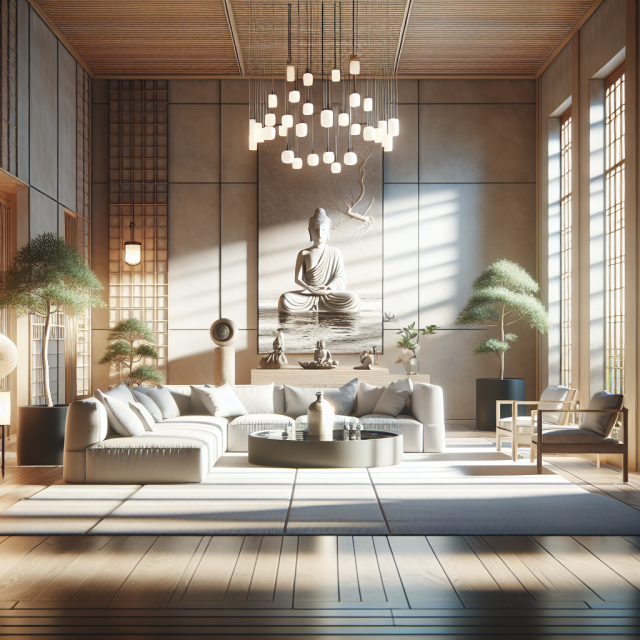
Minimalist Magic: Designing a Zen Living Room for Ultimate Relaxation
In an increasingly hectic world, cultivating a space of serenity and calm within your home is more important than ever. The minimalist approach to interior design can create an oasis of tranquility, particularly in the living room, where relaxation and connection should thrive. By focusing on simplicity, functionality, and harmony, you can design a Zen living room that nurtures both your mind and spirit. Here’s how to harness the magic of minimalism to transform your space for ultimate relaxation.
1. Embrace Simplicity
The cornerstone of a minimalist design is simplicity. Begin by decluttering your living room. Remove any unnecessary items that don’t serve a purpose or hold sentimental value. A clean, open space is visually calming and promotes relaxation. Consider the following:
-
Furniture Selection: Choose a select few pieces of furniture that are functional and aesthetically pleasing. Opt for pieces with clean lines and neutral colors. A low-profile sofa paired with an elegant coffee table can create a serene focal point.
- Multi-functionality: Look for furniture that serves multiple purposes, like a storage ottoman or a sleek bookshelf that doubles as a display for decorative elements. This reduces clutter while enhancing functionality.
2. Create a Calming Color Palette
A harmonious color scheme is essential for a Zen living room. Opt for neutral tones like whites, beiges, and soft greys, which evoke feelings of calmness and relaxation. To add depth, incorporate muted hues from nature—think soft greens and light blues. Here’s how to execute:
-
Wall Colors: Paint your walls in soft, neutral colors to create an airy feel. If you like, add an accent wall with a warm, inviting shade, but keep it subtle to maintain tranquility.
- Textiles and Accessories: Introduce texture through natural fabrics like linen and cotton. Use throw pillows and blankets in complementary, muted colors that enhance the overall palette while adding comfort.
3. Bring Nature Indoors
Nature has a powerful calming effect, and integrating natural elements into your living room can enhance that sense of zen. Here are tips for adding a touch of nature:
-
Plants: Incorporate greenery with various indoor plants. Officially termed “biophilic design,” using plants such as snake plants, pothos, or peace lilies can improve air quality and add a vibrant touch to your space. Place them in simple, earthy pots for an organic look.
- Natural Light: Maximize natural light to enhance your room’s ambiance. Use sheer curtains or blinds that can be drawn back to let light flood in. Consider adding mirrors strategically to reflect light and create an illusion of a larger space.
4. Mindful Layout
The arrangement of furniture in your living room plays a crucial role in feng shui—an ancient practice that emphasizes harmony in one’s environment. To create a soothing flow:
-
Open Space: Arrange furniture to allow for easy movement throughout the room. Disturbances in flow can create visual clutter, which can lead to mental clutter.
- Zen Zones: Designate a specific area for relaxation, such as a reading nook with a comfortable chair and small side table. Include soft lighting, like a floor lamp, to make this space inviting.
5. Minimal Accessories
While decoration is essential, minimalism encourages restraint; be thoughtful about what to include. Choose accessories that enhance your Zen vision without overwhelming the space:
-
Meaningful Art: Select one or two pieces of art that resonate with you. Opt for calming images, such as landscapes or abstract pieces reflecting nature, displayed in simple frames.
- Scent and Sound: Incorporate subtle sensory elements, such as essential oil diffusers or candles with relaxing fragrances like lavender or sandalwood. Use soft background music to amplify the sense of calm.
Conclusion
By adhering to a minimalist approach, you can design a Zen living room that not only looks beautiful but also serves as a sanctuary for relaxation and peace. The goal is to create a space that nurtures your soul, helping you unwind from life’s pressures. With simplicity, careful choice of colors, natural elements, mindful layout, and selected accessories, your living room can radiate tranquility.
FAQ Section
Where can I find minimalist furniture?
- Look for retailers like IKEA, Muji, or West Elm for minimalist furniture options. You can also explore local thrift stores for unique finds.
What plants are best for indoors?
- Snake plants, peace lilies, and pothos are ideal for beginners and thrive indoors with minimal care.
How can I incorporate lighting effectively?
- Use a mix of ambient, task, and accent lighting. Floor lamps with dimmers and LED strip lights can create a soft, welcoming atmosphere.
Where can I buy accessories that match a minimalistic style?
- Online stores like Anthropologie, CB2, and even Amazon offer a variety of minimalist decor accessories, from vases to throw pillows.
Embrace the magic of minimalism to create a Zen living room that fills your home with peace and relaxation. By following these tips, you’ll be well on your way to curating a serene environment—one that caters to your well-being.







